Nowadays Zoroastrians are among the religious minorities in Iran, with a huge history though. That’s why there are stunning tracks of them in different parts of the country. Dakhmeh-ye Zartoshtiyan in Yazd is one of these tracks. These structures are also known as the mute towers of Yazd and more popularly, The Towers of Silence. The structures are a bit far from the city center. And They are kind of intertwined with the concept of death. The Towers of Silence are one of the symbols of ancient Zoroastrian customs related to the burial of their dead. They had a ceremony that is obsolete today but has left a legacy for itself. Join us to learn more about them.
What Does Dakhmeh Literally Mean?

Before we get into anything about the Towers of Silence, let me tell you about Dakhmeh. This way it would be easier to follow up. In Persian, Dakhmeh or Dakhneh is the same as the word “Dezh-Khaneh”. This phrase used to mean a house of filth and today it is used to refer to scary and inappropriate places. Anyway, some experts believe that the root of this word is the word “dag” from ancient Persian. And it means to burn. In various academies, there are numerous meanings for “Dakhmeh”, including an underground house for the dead, a crypt of the dead, Zoroastrian graves and Cemetery etc.
The Towers of Silence are Dakhmeh Or Goor-Dakhmeh?
Generally, most people think Goor-Dakhmeh (burial mound) is the same as Dakhmeh, and both refer to the same concept. But the reality is something else. Let’s see what are the differences.
A Goor-Dakhmeh is a space on rocks, mountains, or hills for burying the dead. And it is normally made with rock architecture. In fact, it is a room in the heart of a mountain, a cliff or so where there are several tombs inside it.
However, Dakhmeh or a tower of silence is a place on high land where they left the corpses of their dead for animals and birds to feed on them. Unlike the Gur-Dakhmeh, Dakhmeh was not a place for burying the dead, but a place for the bodies to deteriorate.
About The Ancient Zoroastrian Towers of Silence
Dakhmeh-ye Zartoshtian is also known as Borj-e Khamoosh. Borj literally means tower and Khamush means silent. And since there are two towers in Yazd, in English it is popular to The Towers of Silence. The Persians of India, who are considered Zoroastrians of Iran, call it Dakhmoo.
Centuries ago, Zoroastrians constructed these buildings in Yazd to hold the burial of their dead. And today they are one of the most significant memoirs of Zoroastrians in Iran. Although there are many other Zoroastrian structures in Tehran, Kerman, Sirjan, Isfahan, Taft, Ashkzar, Ardakan, and so on, The Towers of Silence of Yazd have gone more popular. That’s because of their location. They are located in the Zoroastrians’ religious capital, Yazd. And of course, their proximity to the city and other historical monuments are the other reasons. All of these have caused The Towers Of Silence of Yazd to be considered particularly and to be registered in Iran’s National Heritage List since 1998.
In the past, Zoroastrians, based on their religious beliefs, put the bodies of their dead in the towers so that predators and birds fed on them. Until nothing is left except their bones. There were no graves. Because they considered human corpses unclean. They also believed corpses contaminate the soil, which is a sacred element. Therefore, the carcass bone remained in the same towers, in the middle of a well.
This burial method was common for a long time until it was completely banned in the Pahlavi era. Then gradually they turned all the towers into tombs. However, the mystery of this method and the WHYs are not something that everyone can easily forget about. If you are interested, keep reading to learn more about these buildings and the special method of Zoroastrian burial.
The Towers of Silence In Yazd
The towers of Yazd are in a piece of land, 15 kilometers away to the southeast of Yazd City. These structures are located near the Safaieh area and stand on a low sedimentary hill called the Dakhmeh mountain. This place has two towers. According to historical documents and Zoroastrians’ sayings, both of them were used periodically, every six months. Here they are:
-
The Great Tower Of Mankeji
One of these buildings is the Maneckji Limji Hataria, or in short the Great Mankeji Tower. It is the one on the left. This tower is about 15 meters wide and it is named after the one who built it.
Mankeji is known as Mankeji Sahib. He lived during the reign of Nasser al-Din Shah Qajar. He spoke on behalf of the Persians of India. As their agent he visited the king of the time. He wanted to let hin know about the pressure Zoroastrians were going through and ask him to reduce them. Mankeji is one of the most influential people in the Zoroastrian community. And yet they owe their existence to his efforts. During his stay in Iran, he built a school and paid for the education of many students. He built several buildings as well. One of his most important actions was to remove taxes from the Zoroastrians. Mankeji died in Tehran in 1269 and was buried in the tower he had built.
-
Golestan Tower
The road to the Mankaji Tower was hard to climb and had caused problems for those who carried the corpses. For this reason, they built the Golestan Tower which had an easier access road. Today, You can see it 150 meters to the west of Mankeji Tower. Golestan Tower is 25 meters wide with walls 6 meters high.
The Structures Around The Towers of Silence In Yazd
150 to 200 meters away to the northern side of the Dakhmeh Hill, there are some buildings made of mud, brick, and stone. Most of them have two floors plus several rooms. It seems these buildings were for people to rest after traveling a long distance to get the dead bodies to the towers or for their burial stuff.
-
Kheyla
They called the oldest buildings Kheyla. Kheyla buildings are on the western side and date back to the Safavid era. These buildings had various rooms such as a kitchen, a ceremony hall, and so on. And people who had carried the dead for hours and walked from their village to the tower, rested for a while after a relatively long journey, in these buildings. And then they would hold the ceremony.
Each village had a building or Kheyla near the tower.
-
Salar’s House
One of these buildings belonged to the ruler of the tower, Salar. And “Salar” means the person in charge. Salar was in charge of the affairs of the dead. He bathed the corpse then took it to the top of the tower and left it for the birds. Salar of the tower had to stay close to the tower for the rest of his life. Sadly, he had no right to leave there. In the past, most deaths were due to infectious diseases. Moreover, Salars were in constant contact with the dead, so it was very probable that they might have the disease. Therefore, they had to live somewhere outside the village and have less contact with people.
-
Fire Room
One of the structures in this complex belonged to firemakers. They were usually two people, and their work began the day the body was taken into the tower. When it got dark at night, they lit a fire in a special room with a window facing the tower. they had to keep it lit until sunrise. The fire had to be on for three nights in a row and shine through the window to the whole tower.
On the wall of the tower, there was a small hole facing the window of the fire room. This way the flames would shine right to the tower from dawn to dusk.
According to Zoroastrians, the soul of a deceased flies around and above his body for three days and nights. And then goes to heaven. That’s why they had fire rooms. So that the deceased would not be afraid of the darkness and loneliness in the first three nights after his death.
The History Of The Zoroastrians Towers Of Silence
It seems like there were no Towers of Silence before Zoroastrianism. And people just left their dead on a distant land for the animals. And then Aryans, they had places to burn their dead and they called that Dakhmeh. But by the dawn of Zoroastrianism, people couldn’t burn their dead in Dakhmeh. therefore instead of burning they just left their dead there.
Animal Access To The Towers
Initially, any carnivorous animal had access to the towers. But little by little with the changes in the Zoroastrian religion, the function of the towers also changed. And the duty of dismembering the corpse was left to the birds only, like vultures. For this reason, they started building the towers on heights and did their best to restrict the access of land predators. And of course, later on, they even took care of the access of the birds and decided to let the natural factors such as sunlight to be in charge of the deterioration. Like what they did in Gonbad-e Kavous in Golestan province. They put the body of the deceased in a glass coffin and the sun did take care of the rest.
The Obsolescence Of The Towers Of Silence In Iran

The Zoroastrians continued sailing the same boat until about years 1318 and 1319. Reza Khan forbade using the towers of silence in some places, such as Tehran. And then inevitably the Zoroastrians had to go for another way of the burial that they rarely used, putting the corpses in graves. The narratives say they stopped using the towers since the 1320s in Kerman and since the 1340s in Yazd. Yet there are some documents, regarding the fact that they did it in Yazd until 1350.
The Architecture And Construction Of The Zoroastrian Towers

The towers came in two forms. Some were man-made and some were natural which people found them. These places needed to facilitate the access of carnivores to the carcass. This way the deterioration of the corpse would accelerate. That is why all the towers that are available today are roofless and are located outside of urban and rural settlements. And they are often on high grounds, as well. The towers were cylindrical and made of stone, not mud. Because mud is a sacred element for Zoroastrians. According to the remains of the towers, most of them did not even have a door or entrance and people just got inside using ladders.
The cylindrical Towers of Silence have a circumference of about 100 meters. The wall all around the tower was made of stone, cement, clay, and plaster. The spots were carefully selected so that wind and rain would not direct the pollution to residential areas. They also used raw clay and gypsum in the constructions so that the pollution of the corruption of the dead would not find its way to the ground.
Different Parts Of The Towers Of Silence

The towers, like many other structures, had special sections, each with a specific function. In the picture above, you can see an overview of a tower and its different parts. Stay with us for more details.
-
The Road Of The Tower
Since the tower was located at a great distance from the settlements and was somehow far from civilizations, therefore they needed a road to get there. The public could carry the dead bodies to the foot of the hill. But only the tower officials could go further. Today, the road is paved so that visitors can easily visit the tower.
-
Stone Or Iron Door Of The Zoroastrian Towers
Wherever there is a corpse, the predators are all around. This danger has always existed for the towers and the bodies inside them. That’s why they always put an iron or stone door to preserve the corpses unless it had no entrance doors.
-
The Inscription Of The Tower
On the wall of the tower, sometimes above the entrance, there was an inscription. They mentioned the information about the tower on it. Inscriptions are common among historical buildings. That’s why nowadays we can see them in most historical monuments.
-
Inside The Zoroastrian Towers
The inner surface of a Tower of Silence consists of a flat, round space covered by large boulders. This section hypothetically consists of three circular strips, which are:
1. The male part or the male ring which is the first strip. It is larger than the other strips and is attached to the wall around the tower.
2. The female part or the female ring which is the middle strip, after the male part.
3. The children’s section or the children’s ring which is the inner strip. It is the one closest to the center of the tower.
-
Ostudan
The inner surface of the tower has a slope toward the center, leading to a deep well in the middle of the tower. At the bottom of the well, there is a moving rock, “Ervis”. This deep well leads to other four deeper wells, surrounding the tower.
They covered the middle well with stones and cement so that germs and contaminations do not spread to the outside. Zoroastrians called this well “Ostudan” which means a place for bones. Indians call it “Stupa”.
In fact, Ostudan was the place where they dumped the remains of the corpses. Zoroastrians believed the rich and the poor end up in the same place at the bottom of the well. So the amount of money they had really did not matter.
Zoroastrian’s Burial Ceremony
Now after learning about the Zoroastrian Towers of Silence maybe you are also interested to learn about the strange ritual they use to say goodbye to their dead.
-
The First Moments After Death
Among the Zoroastrians, after someone died, the relatives wore white clothes and there was no wailing. Because in Zoroastrianism, death is not the end of life. In other words, they believed death is the beginning of continuing mental happiness. And everyone got ready to transfer the corpse to the tower and say goodbye to their loved one.
“Birth and death” room or “death and life” room was one of the rooms in the complex close to the towers. When someone died, people would transfer the body to this room. After documenting the information related to the death they would wash the corpse and then prepare it for burial.
-
The Corpse Enters The Tower Of Silence
During the ceremony, the relatives deliver the body to Salar. Afterward, Salar would take it into the tower and lay it on the ground. He would then open the shroud and leave the yard. In just two hours vultures would leave nothing except bones. Interestingly, the carnivores birds would wait until Salar leave the tower. Of course, crows and smaller birds helped the vultures in the process.
-
Cleaning The Tower
After the birds finished what they had started, the sun would do the rest and dry the carcass. When the number of the corpses reached 10 to 12, Salar would dump the remains into the well, Ostudan.
Once every few months, Salar would pour lime and sulfur or acid to burn the bones and turn them to ashes. The rain would wash the ashes and lead them to the four wells on all four sides of the main well. It was wise that they covered the bottom of these wells with sand and charcoal to filter and purify the water before it went into the depths of the earth.
Final Words
I hope you have enjoyed this strange journey with us. If so please leave us a comment and let us know. Remember Yazd is a very beautiful city with lots of attraction sites that would surprise you like Yazd Jameh Mosque, Dowlat Abad Garden, Amir Chakhmaq Complex, and so on. You can take a short look at them here. For further information or booking a tour contact us via the contact information at the end of this page.

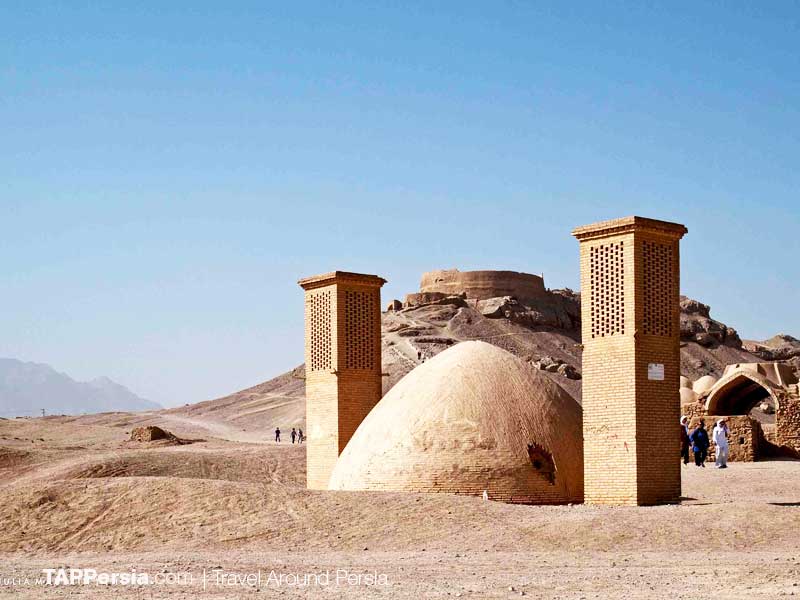












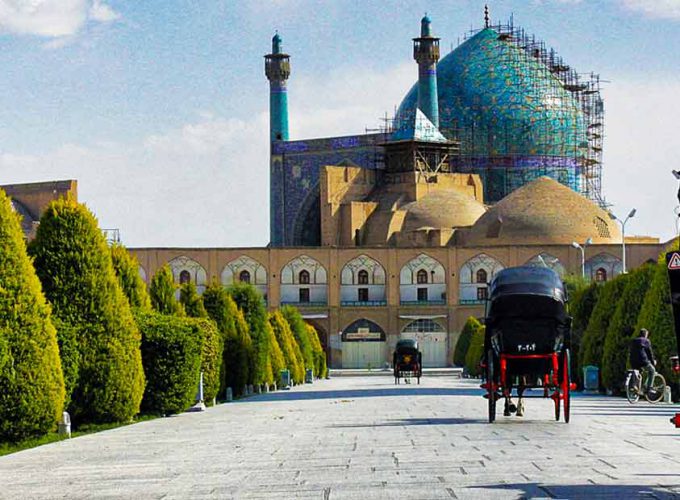
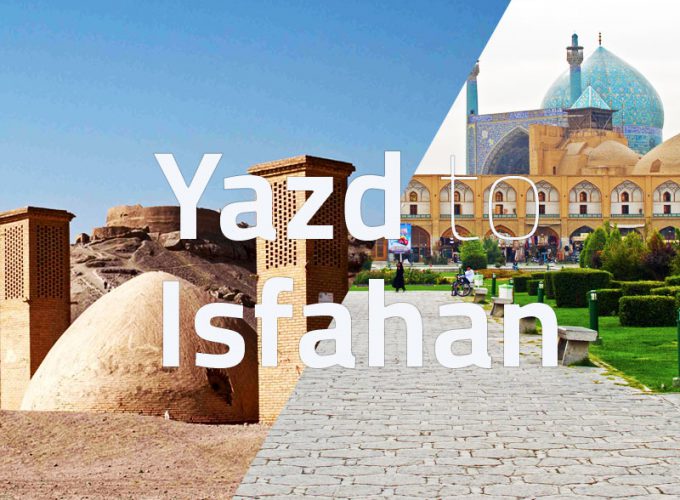
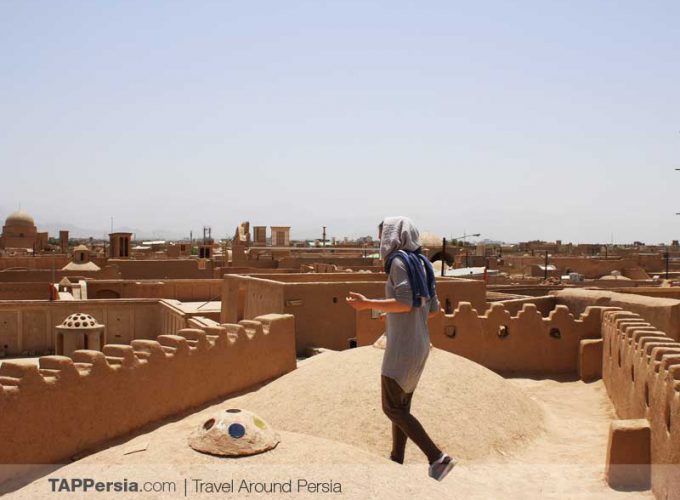
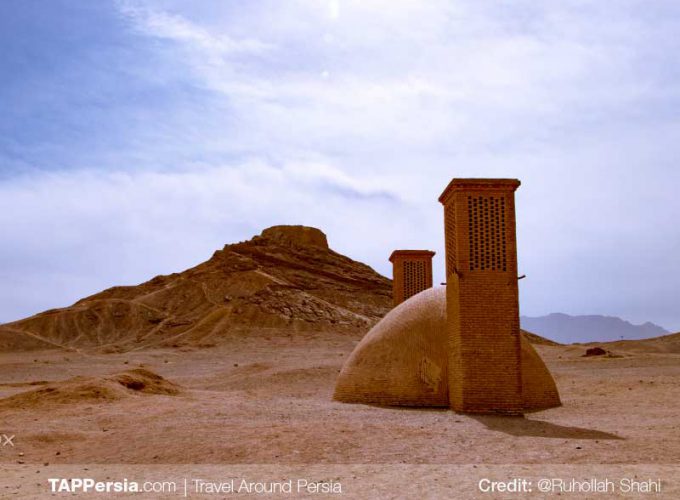
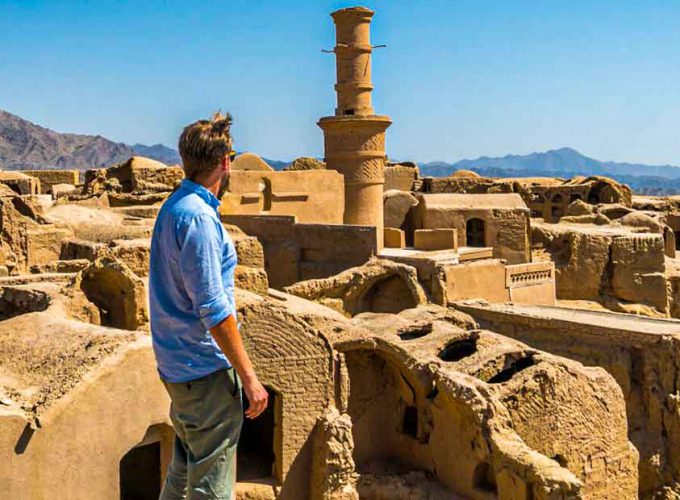
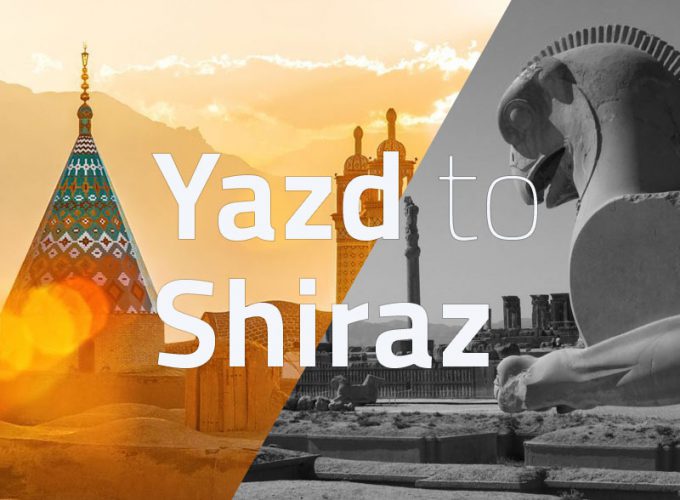


Comment (0)